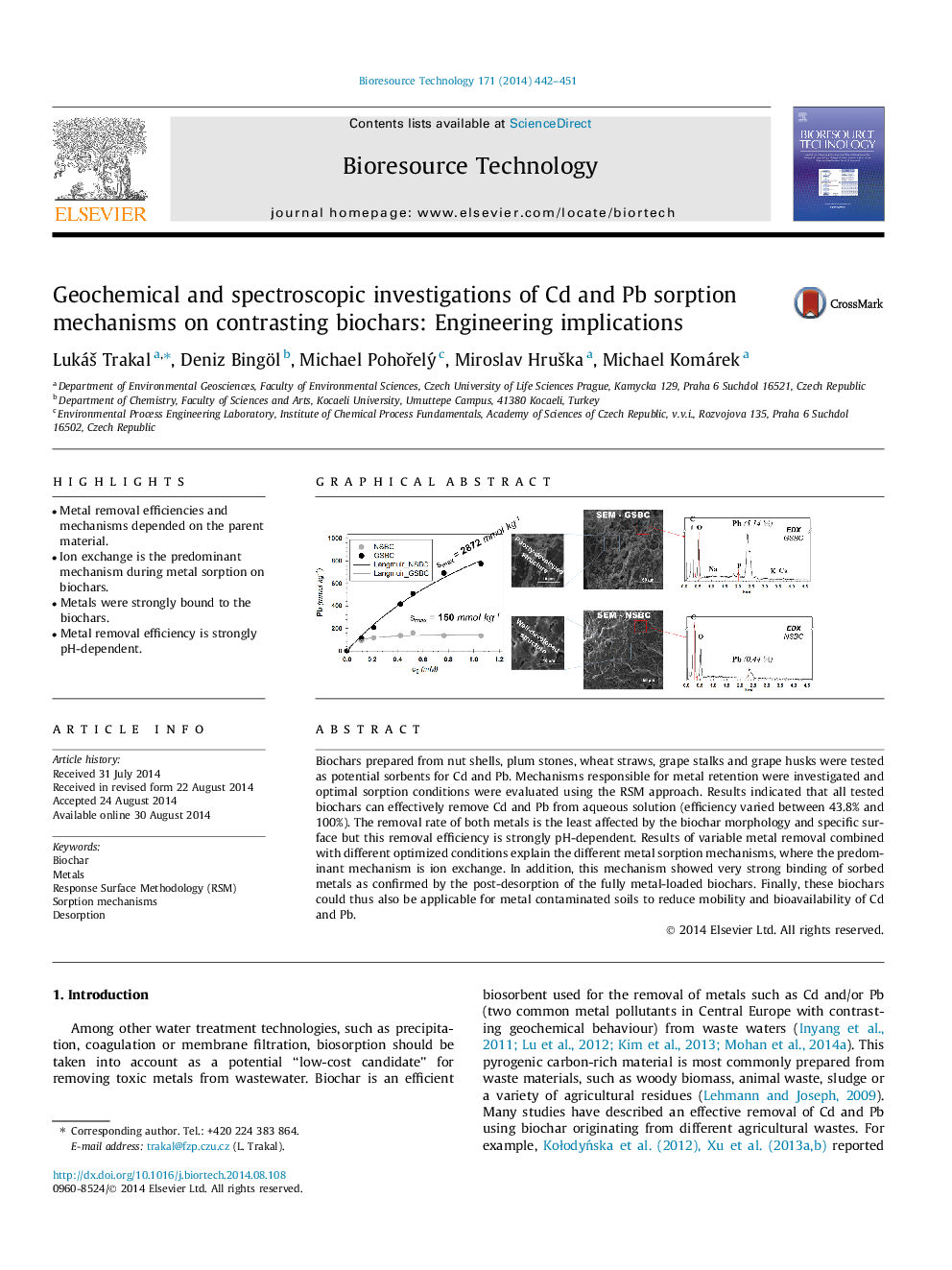| Article ID | Journal | Published Year | Pages | File Type |
|---|---|---|---|---|
| 680370 | Bioresource Technology | 2014 | 10 Pages |
•Metal removal efficiencies and mechanisms depended on the parent material.•Ion exchange is the predominant mechanism during metal sorption on biochars.•Metals were strongly bound to the biochars.•Metal removal efficiency is strongly pH-dependent.
Biochars prepared from nut shells, plum stones, wheat straws, grape stalks and grape husks were tested as potential sorbents for Cd and Pb. Mechanisms responsible for metal retention were investigated and optimal sorption conditions were evaluated using the RSM approach. Results indicated that all tested biochars can effectively remove Cd and Pb from aqueous solution (efficiency varied between 43.8% and 100%). The removal rate of both metals is the least affected by the biochar morphology and specific surface but this removal efficiency is strongly pH-dependent. Results of variable metal removal combined with different optimized conditions explain the different metal sorption mechanisms, where the predominant mechanism is ion exchange. In addition, this mechanism showed very strong binding of sorbed metals as confirmed by the post-desorption of the fully metal-loaded biochars. Finally, these biochars could thus also be applicable for metal contaminated soils to reduce mobility and bioavailability of Cd and Pb.
Graphical abstractFigure optionsDownload full-size imageDownload as PowerPoint slide
